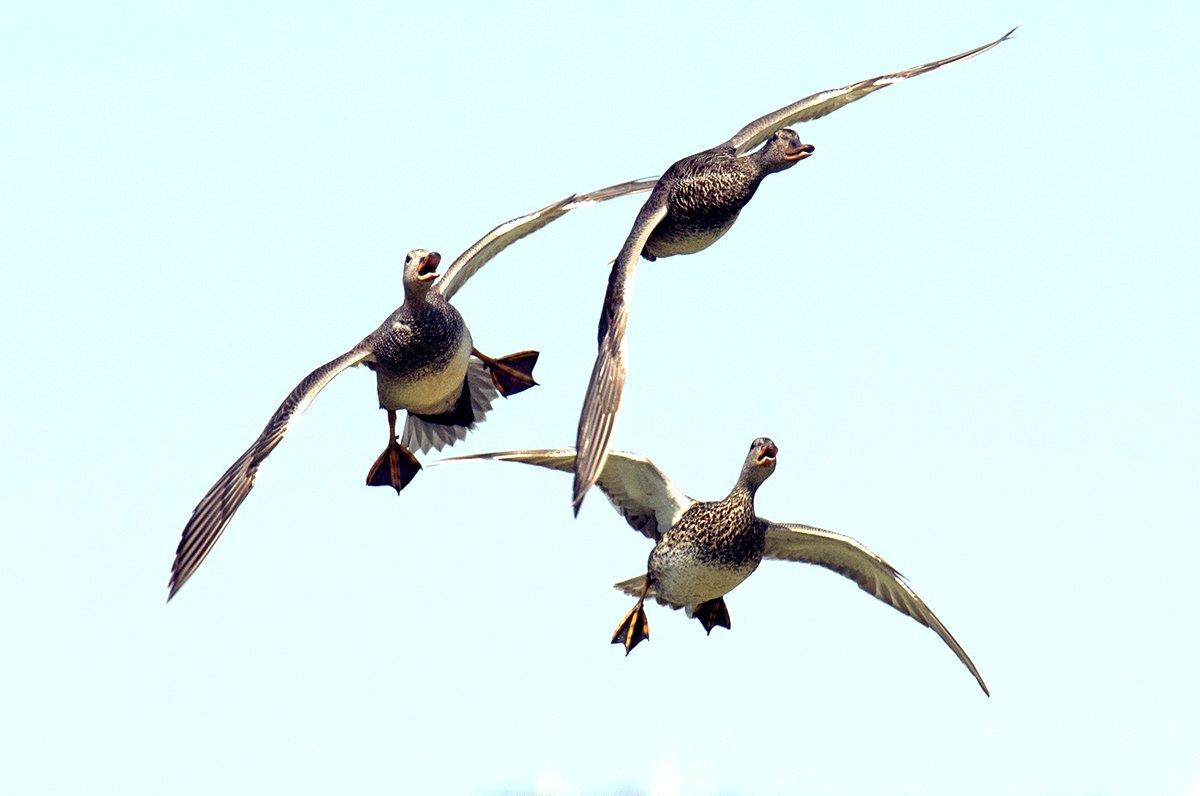Pintails, Other Species Show Good Gains
With many duck seasons just weeks away, hunters have received great news: Spring 2017 duck numbers were strong, and some species showed gains.
The 2017 Waterfowl Breeding Population and Habitat Survey, released Aug. 15, put the breeding duck population at about 47.27 million birds, just 2 percent lower than the 48.36 million estimate from 2016 but still about 34 percent higher than the long-term average. The 2017 figure is the fifth-highest breeding duck population estimate recorded. The U.S. Fish and Wildlife Service and Canadian Wildlife Service have jointly conducted the annual survey since 1955.
The duck numbers remain really strong, Dr. Frank Rohwer, president of Delta Waterfowl, said in a press release. Most duck populations remain near or above long-term averages.
Blue-winged teal showed the largest gain, with the population estimate increasing about 18 percent, from 6.69 million in 2016 to 7.89 million in 2017 — 57 percent higher than their long-term average. Gadwall numbers increased about 13 percent to 4.18 million birds — the highest estimate ever recorded. And northern shovelers and northern pintails each jumped about 10 percent from 2016. The pintail increase is especially welcome, as the species had declined for five consecutive years and remains about 27 percent below the long-term average. The Fish and Wildlife Service decreased the daily 2017 pintail bag limit to one bird daily in all flyways.
Isn't it great to finally have some good news to report about pintails? Rohwer said in the Delta release. They've increased due to the way water was distributed across the prairie this year. The pintails' preferred breeding range — southern Alberta and southern Saskatchewan — provided ample shallow wetlands. I also expect pintail production to be substantially improved over last year. I expect the estimate is high enough that hunters will be blessed with a two-pintail daily limit for the 2018-'19 season.
Mallard numbers decreased about 11 percent, from a record 11.79 million in 2016 to about 10.49 million in 2017, but the species remains 34 percent higher than the long-term average. Green-winged teal decreased about 16 percent, from 4.28 million in 2016 to 3.61 million in 2017, and American wigeon dropped about 19 percent, from 3.41 million in 2016 to 2.78 million in 2017. However, greenwing numbers are still about 70 percent higher than the long-term average, and the wigeon population is about 6 percent higher than the long-term average.
Diver fans got some good news with canvasback numbers, as cans remained almost unchanged, down just 1 percent from 2016, with about 730,000 birds. Redheads dropped about 13 percent to about 1.12 million ducks, and scaup decreased about 12 percent to 4.37 million.
Results from the Eastern Survey Area were somewhat mixed. Mallards in that area increased by about 7 percent, and mergansers, goldeneyes and green-winged teal increased 15 percent, 10 percent and 8 percent, respectively. However, ring-necked duck numbers dropped about 19 percent, from about 572,000 birds in 2016 to 463,000 in 2017 — 11 percent lower than the long-term average. And American black duck estimates fell about 11 percent, from 606,000 in 2016 to 541,000 in 2017, or 12 percent lower than the long-term average.
Water conditions were great in the Eastern Survey Area, Rohwer said in the Delta release. Mallards responded, but surprisingly, black ducks and ring-necked duck numbers are down, which will affect hunters in the Atlantic Flyway.
The survey indicated that pond counts were about 6.01 million, which was about 22 percent higher than in 2016 and 17 percent higher than the long-term average. Pond counts in prairie and parkland Canada jumped about 24 percent, to about 23 percent higher than the long-term average, and counts in the north-central United States were up 16 percent, or about 4 percent higher than the long-term average. However, as Rohwer pointed out in the release, wetland conditions were much better in May, when many of the surveys were conducted. Drought subsequently affected nesting conditions in many areas.
I think the pond count is a little misleading, because wetlands in the Dakotas and parts of the southern Canadian prairies dried out quickly and dramatically following the surveys, Rohwer said in the release. Re-nesting and brood survival are going to be far lower this year. I don't expect the production we've seen in recent years.
And that will affect hunting, as the fall flight is comprised of adult and juvenile ducks, not just the spring breeding population. The 2017 flight will likely have a higher percentage of adult ducks, which generally makes for tougher hunting.
Still, the spring numbers bring hope and optimism before autumn. It's anyone's guess how the season will go, but at least the building blocks were in place.
Click here for more Realtree waterfowl hunting content. And check us out on Facebook.







